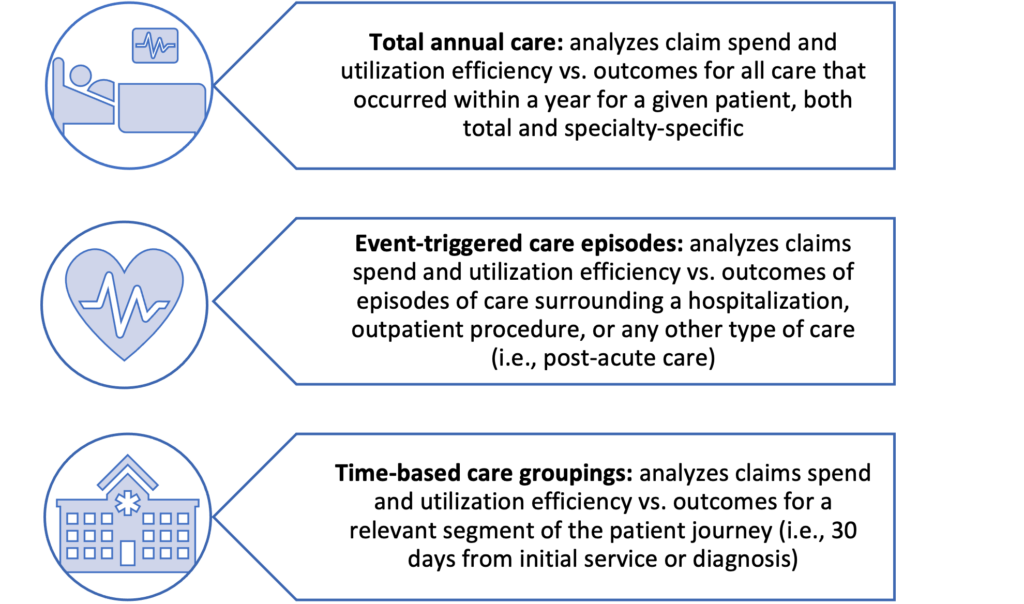As healthcare data continues to grow exponentially, grouping and organizing it into clinical episodes and outcomes for comparison and analysis is critical to adding contextual meaning and bringing forward insights. These grouped data can offer an efficient and effective method for managing population health, measuring clinical and financial performance, and designing value-based care contracts. Grouped data provides value — whether the aim is to compare and analyze clinical and financial performance or identify care and patient groupings for bundled and capitated payment. However, not all grouper technologies are created equal. The following considerations are essential for organizations evaluating groupers. Grouped data can be used for multiple use cases and applications. The Centers for Medicare & Medicaid Services (CMS) has spearheaded the utilization of episode grouped data for its value-based care programs and alternative payment models (APM). However, they can also be applied to pricing and payment, network optimization, risk adjustment, research, supply chain management, clinical interventions, and patient decision support. For the optimal implementation of grouped data, it is necessary to understand the use case, including why and how the grouped data will be applied, all stakeholders, and the impacted patient-physician population. Decision-makers should seek integrated software solutions that can solve all or most existing use cases across the organization. An effective grouper technology consolidates multiple use-cases, maximizing ROI and ensuring efficient business processes. For example, the ability to benchmark the performance of various providers such as hospitals, ambulatory surgery centers, and physicians enables actionable insights for multiple use cases such as performance improvement, value-based contracting, and network design. As a result, effective grouper technology should have a comprehensive library of care groupings and metrics for enterprise-wide insights on care value. Clarify’s Care Grouper (CCG) technology is the most precise in the industry because it draws upon one of the largest datasets in healthcare. It can benchmark the performance of any provider (e.g., hospitals, ambulatory surgery centers, and physicians). With machine-learning precision, the Clarify Atlas Platform maps over 300 million patient journeys, includes 400+ patient-level social determinants of health insights and offers a library of 200+ UI-configurable care groupings. Click here for a digital copy of Dr. Ines Maria Vigil’s guide on population health analytics. Dr. Vigil, MD, MPH, MBA, is the SVP and GM of Provider Solutions and a Medical Lead of Payer Solutions at Clarify Health.
Top considerations when selecting and implementing groupers
Understand the stakeholders and each use-case application

- Author Details





